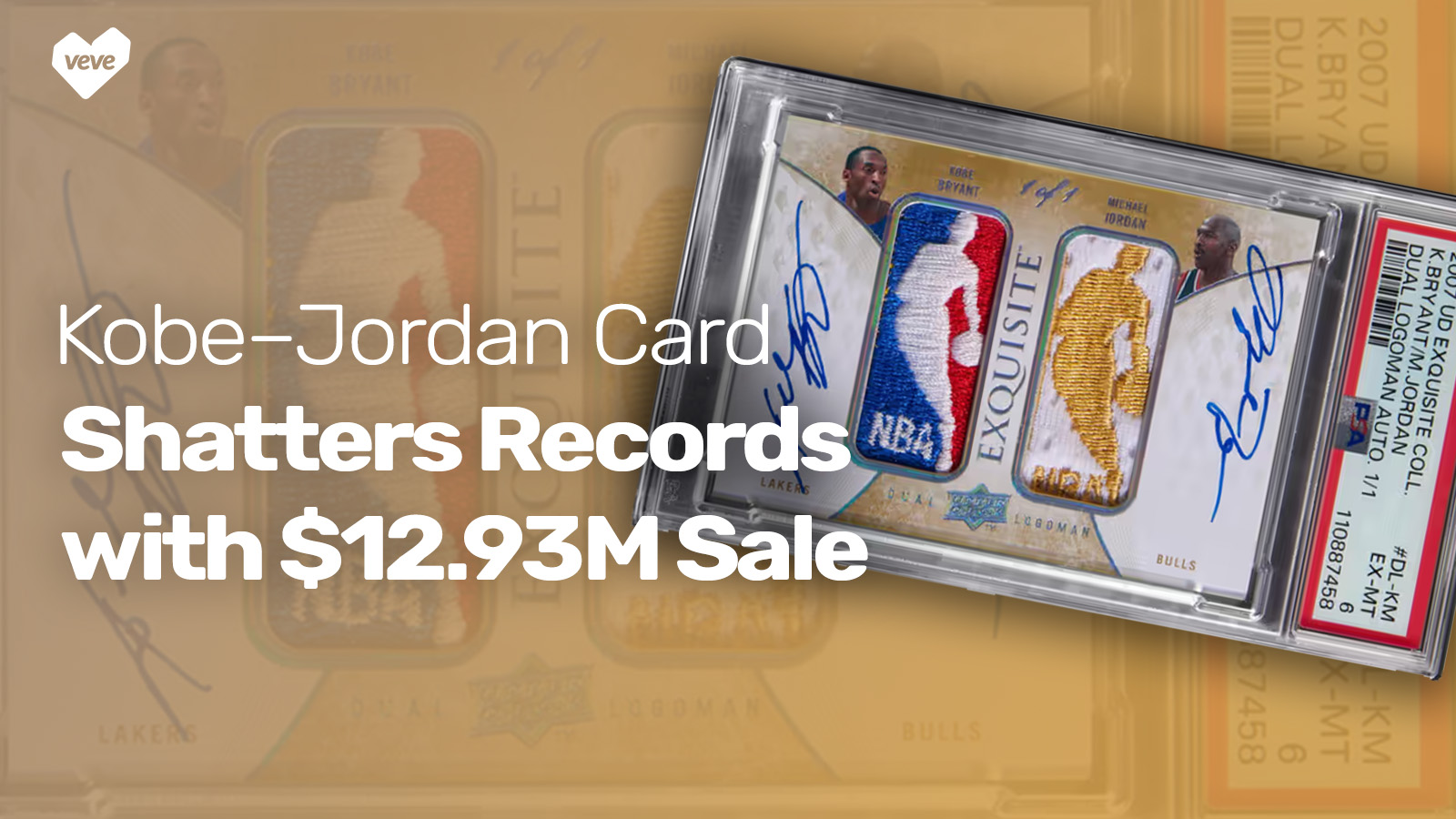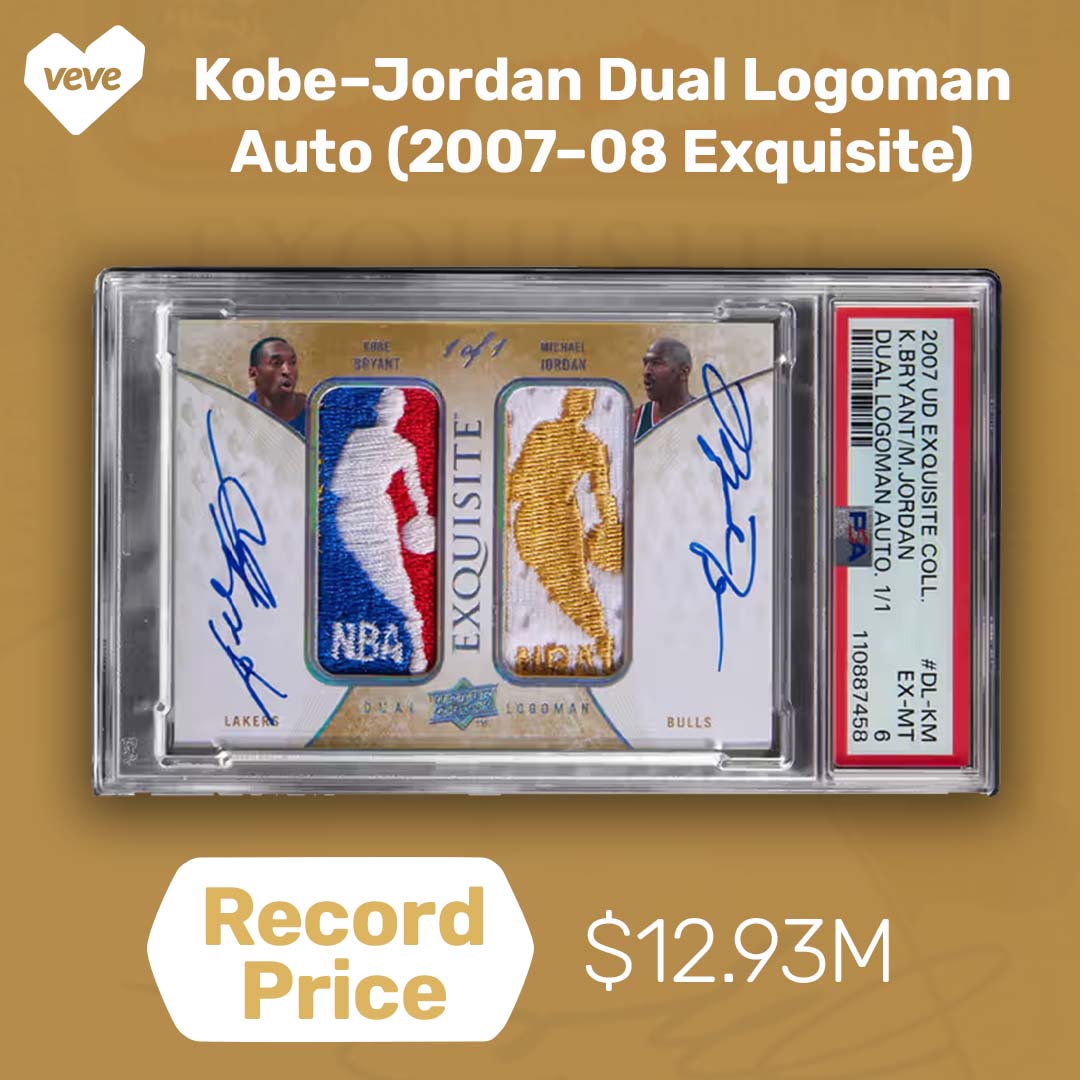
By Ryan McIntyre · August 26, 2025
The most expensive sports card in history just changed hands, and it’s sending shockwaves through the collecting world.
In the early 2000s, every box of Weet-Bix in New Zealand came with a pack of Stat Attack trading cards featuring All Blacks players, our national rugby team. I can still picture racing home from the weekly shop, ripping into the cereal box, and hoping to pull Doug Howlett, my favourite. Stat Attack went viral back then. Kids traded school lunches for the “perfect” card or bought extra boxes just for another chance.
Today, you can grab a full set for a few bucks. Even Jonah Lomu’s rookie only reaches a couple grand.
While Stat Attack ruled here, across the globe Kobe Bryant was chasing GOAT status. In the early 2000s, he led the Lakers to a three-peat, the franchise’s first rings in over a decade. Fans watched a rookie from 1996 rise into a legend with more titles still ahead.
That legacy lives on. This month, a one-of-a-kind Michael Jordan and Kobe Bryant card sold for $12.93 million, the most expensive sports card in history.
Woah.
Let’s talk about it.

Back in 2013, a collector named Gerald Fortier picked up the 2007–08 Upper Deck Exquisite Collection Dual Logoman for $25,000. At the time, that was serious money for a modern basketball card, and plenty of people thought he was out of his mind. But he clearly saw something others didn’t. The weight of owning the only Jordan–Kobe Logoman card in existence.
A couple of years later, in 2015, another collector came knocking with an offer of $170,000. That’s a 7x return in just two years. Fortier took the deal, and the card disappeared into a private collection. From then on, it became more myth than memory. Everyone in the hobby knew it was out there somewhere, but hardly anyone had ever laid eyes on it. The Jordan–Kobe Logoman became whispered about like a holy grail, before returning for auction.
On August 24, 2025, Heritage Auctions ran its Summer Platinum Night event in Dallas. The timing couldn’t have been more fitting: Mamba Day (8/24, Kobe’s jersey numbers), and it all taking place just one day after what would have been Kobe’s 47th birthday.
Collectors and investors from all over the world piled in, and after 82 bids the hammer dropped at $12,932,000. That number beat the estimated auction price of $6 million, and leapfrogged past the legendary 1952 Mickey Mantle rookie at $12.6 million to become the most expensive sports card ever.
Chris Ivy, Heritage’s Director of Sports Auctions, called the Jordan–Kobe Logoman “the pinnacle for modern card collectors.” And he’s right.
There will never be another card that puts these two legends side by side like this.
So why did this Kobe-Jordan card climb to nearly $13 million? Scarcity and story.
This is a true 1-of-1, the only Jordan–Kobe Dual Logoman ever made. It carries two NBA logo patches, each cut from game-worn jerseys, one from Michael and one from Kobe. Both legends signed it in bold ink, and Jordan’s patch even includes the special gold NBA logo from the league’s 50th anniversary season in 1996–97. Sure, it only graded a PSA 6, but when you’re holding a one-of-a-kind piece of basketball history, the number on the slab doesn’t matter.
Then there’s the story, which in my opinion, is where the true value lies. Fans still debate today who the real GOAT is. Jordan or Kobe (Lebron fans can take a seat for a second).
Jordan set the standard, redefining what greatness looked like on the court and inspiring an entire generation of players, including Kobe. Kobe then carried that torch forward, bringing the same relentless drive, championship mentality, and global influence to a new era of fans.
Kobe, as well, credited Jordan as the blueprint for his game, even saying he would never have won a championship without him. Together, their legacies shaped basketball across two decades, and this card captures that passing of the torch in a way few other things have.
And of course, Kobe’s tragic passing in 2020 makes the card resonate on an even deeper level. There will never be another Kobe signature on anything. This card is a tangible piece of his legacy, sitting side by side with “His Airness”, and their combined legacies is how we got to $12.93 million.
By achieving a nearly $13 million sale, the Kobe–Jordan card blew the doors off what many thought was the ceiling for sports cards. In the wider world of memorabilia, it trails only Babe Ruth’s 1932 game-worn jersey, which went for $24 million.
More importantly, this sale is a signal to the entire collecting industry. It proves that under the right circumstances, a modern-era item can rival or even surpass the value of the most storied vintage pieces. Not long ago, many collectors would have scoffed at the idea of a 21st-century card fetching more than a 1950s Mickey Mantle or a 1910s Honus Wagner.
But it just happened, and this shift in perspective could have big ripple effects.
For one, it validates the market for high-end modern collectibles. We’ve already watched the hobby’s momentum surging in recent years.
Just last month, online card sales topped $308 million across marketplaces.
The hobby is booming, and this record Kobe-Jordan card sale is like a thunderclap confirming that trend. In some ways, high-end trading cards are starting to resemble fine art, where seven- and eight-figure sales aren’t off the table for the rarest masterpieces
And it’s not just sports cards climbing higher. We’ve seen a Magic: The Gathering “One Ring” card sell to Post Malone for over $2 million. A Star Wars “Jedi a la Kurosawa” Superfractor jumped from $16K in 2021 to $100K just four years later, now the most expensive Star Wars card ever.
So what’s the takeaway from all these examples?
Collecting is alive and well, and reaching new heights. When a basketball grail, a TCG card, and a Star Wars piece of pop culture can all make headlines in the same breath, it’s hard to argue we aren’t in a golden era for collectors.
Not too long ago, collecting was written off as a niche pastime. Today, we’re seeing headlines about multi-million dollar sales and celebrities joining the chase. Milestones like the Jordan–Kobe record are reminders of why we fell in love with collecting in the first place
The thrill of finding something truly great, the stories those items invoke, and the hunt to find them.
As VeVe’s co-founder Dan Crothers put it, these moments prove "collecting is alive and thriving — not just in the physical world, not just digital, but across the board." The hobby keeps expanding into new formats and new audiences, yet the passion at its core hasn’t changed. We see it every day on VeVe: fans chasing digital comics and drops with the same energy they once poured into rare cards or vintage toys. The spirit of collecting adapts, but it never fades.
That’s what makes this near-$13 million Kobe-Jordan card so powerful. It’s a cultural artifact, proof of how far the hobby has come. A piece once bought for the price of a car now carries the price of a private island. And to those who live for this, it makes perfect sense. Because, really, can you ever put a price on legacy?
Founded in 2018, VeVe was created for collectors by collectors to bring premium licensed digital collectibles to the mass market. With over 8 million NFTs sold, VeVe is the largest carbon neutral digital collectibles platform, and one of the top grossing Entertainment Apps in the Google Play and Apple stores. #CollectorsAtHeart